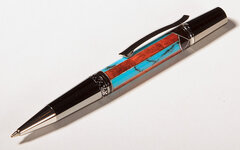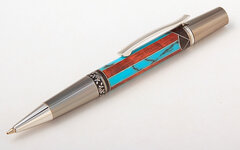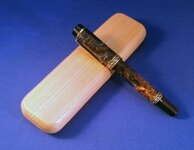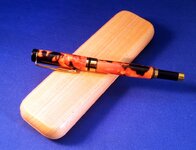Sylvanite
Member
If you browse through the IAP library and Pen Photography Forum, you'll find several references to commercial light tents, light kits that include tents, and other things that work as light tents, as well as instructions for building one yourself. There's lots of information on what a light tent is, and how to get one, but nothing about why you would want it in the first place.
So, what makes a light tent desirable? Why do we use them for pen photos?
The answer has to do with the way pens (especially the metal components) reflect light. The physics of reflection is actually quite simple:
The actual photographic application, however, can get very complicated. Complicated enough to fill a book - and in fact, many books have been written on the subject. I'll try to be somewhat more brief.
Consider how reflection works on a curved surface. When light from a single location meets a convex reflector, it is scattered across a wide range of angles. A camera will only see a small portion of it. Conversely, when looking at a convex reflection, we see (or a camera sees) images reflected from a wide range of angles.
Here's an example of a pen lit with two studio lights. The primary light is above and to the left of the pen. You can see the crisp shadow it creates. The second light comes from the front-right side of the photo. It is comparatively dim and serves to "fill in" the shadow.
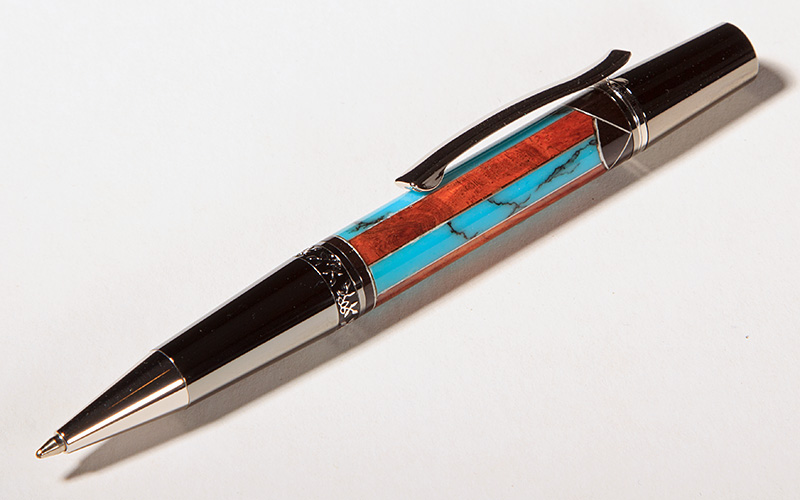
The pen blank is lit well enough to see, but the curved metal components are nearly all black. Most of that area is a reflection of the unlit studio.
Now here is a photo taken the same way except that the pen is inside a light tent.
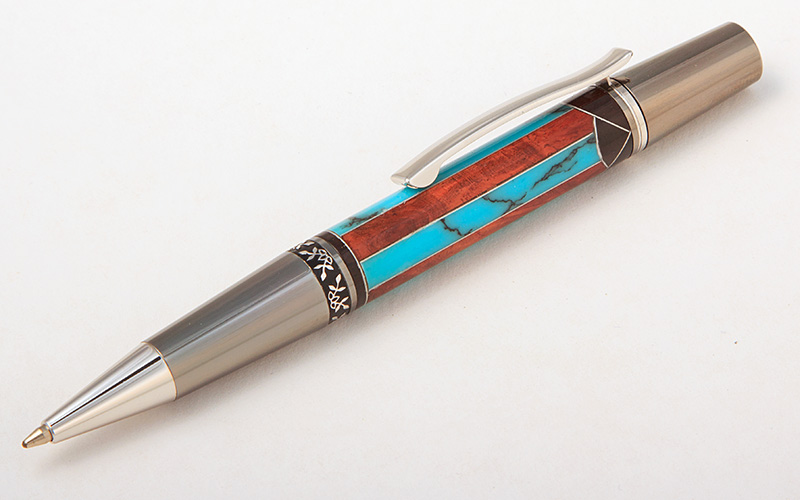
A light tent is essentially a dome over the pen that provides (at least some) illumination from all visible angles. This is what photographers refer to as a "large" light source. Note that the shadow under the pen is still present, but it is very soft. Because light strikes the metal components from all angles, some light is reflected back to the camera from the entire convex surface.
This photo is not perfect by any means, but it is a much better portrayal of the pen than the previous image. The large dark spots are gone. The detail in the pen hardware is now clearly visible, as is the metal segmentation in the pen barrel.
Simply put, a light tent yields more complete illumination of curved reflective surfaces. That's why we like to use them for pen photography. There are other ways of producing "large" light, but a tent is simple, inexpensive, and practical.
I hope that makes sense,
Eric
So, what makes a light tent desirable? Why do we use them for pen photos?
The answer has to do with the way pens (especially the metal components) reflect light. The physics of reflection is actually quite simple:
angle of incidence = angle of reflection.
That's all. When light strikes a reflective object, it bounces off at the same angle.The actual photographic application, however, can get very complicated. Complicated enough to fill a book - and in fact, many books have been written on the subject. I'll try to be somewhat more brief.
Consider how reflection works on a curved surface. When light from a single location meets a convex reflector, it is scattered across a wide range of angles. A camera will only see a small portion of it. Conversely, when looking at a convex reflection, we see (or a camera sees) images reflected from a wide range of angles.
Here's an example of a pen lit with two studio lights. The primary light is above and to the left of the pen. You can see the crisp shadow it creates. The second light comes from the front-right side of the photo. It is comparatively dim and serves to "fill in" the shadow.
The pen blank is lit well enough to see, but the curved metal components are nearly all black. Most of that area is a reflection of the unlit studio.
Now here is a photo taken the same way except that the pen is inside a light tent.
A light tent is essentially a dome over the pen that provides (at least some) illumination from all visible angles. This is what photographers refer to as a "large" light source. Note that the shadow under the pen is still present, but it is very soft. Because light strikes the metal components from all angles, some light is reflected back to the camera from the entire convex surface.
This photo is not perfect by any means, but it is a much better portrayal of the pen than the previous image. The large dark spots are gone. The detail in the pen hardware is now clearly visible, as is the metal segmentation in the pen barrel.
Simply put, a light tent yields more complete illumination of curved reflective surfaces. That's why we like to use them for pen photography. There are other ways of producing "large" light, but a tent is simple, inexpensive, and practical.
I hope that makes sense,
Eric

